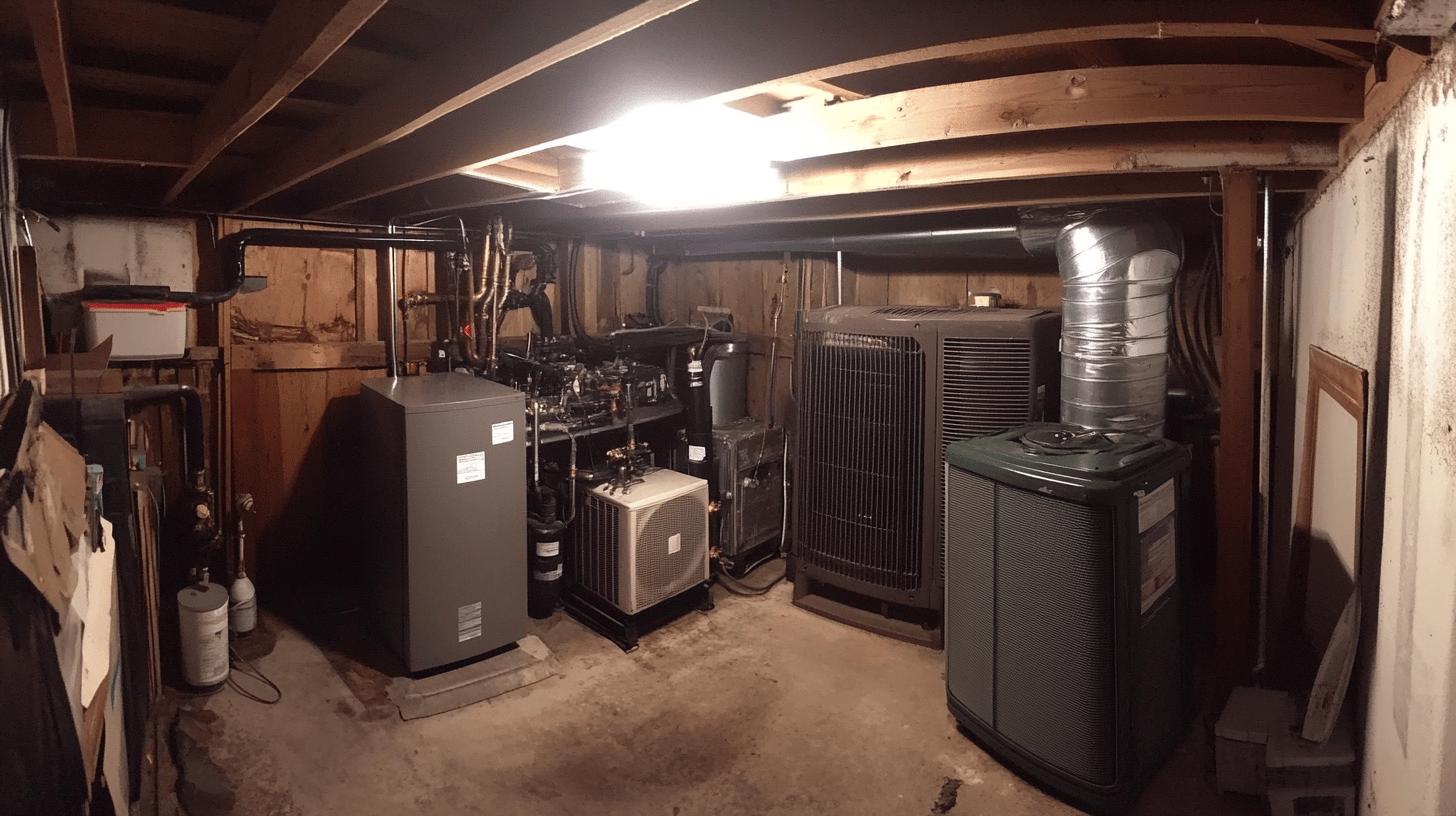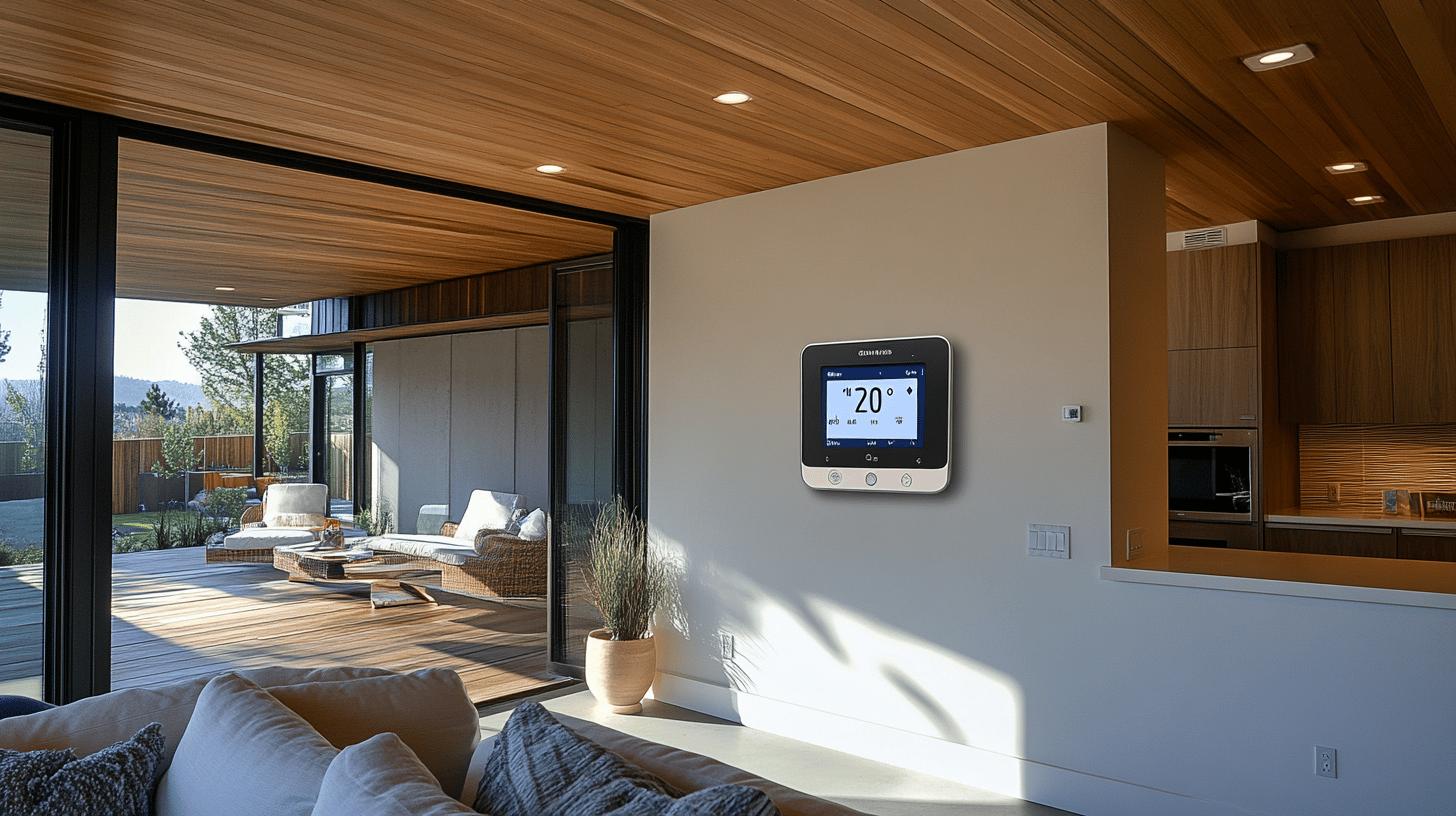TL;DR:
- Thermostat: Regulates indoor temperature.
- Furnace: Generates heat using natural gas or electricity, dispersing it via ductwork.
- Air Conditioner: Removes heat indoors through refrigeration.
- Heat Pump: Transfers heat for both heating and cooling, efficient in moderate climates.
- Ductwork: Distributes conditioned air throughout a home.
- System Types: Split systems (indoor/outdoor units), ductless systems (no ducts), packaged systems (all-in-one units for commercial use).
- Thermostat Types: Mechanical, programmable, smart, Wi-Fi-enabled.
- Maintenance: Regular filter replacement, duct cleaning, and professional servicing ensure efficiency and longevity.
Ever wonder how your home stays comfortable no matter the season? Understanding how an HVAC system works is key to keeping things cozy all year. Whether it’s the heat of summer or the chill of winter, HVAC systems make sure your indoor temperature is just right. In this article, you’ll learn about the parts and processes of HVAC systems. We’ll explain everything from thermostats to ductwork and break down how these systems keep your home or business comfortable.
Understanding HVAC System Components
The thermostat is like the brain of your HVAC system. It controls the temperature by telling the system when to heat or cool the air. When you set a temperature, the thermostat checks the room’s current temperature. If it’s too hot or too cold, it sends a signal to the HVAC system to adjust it, keeping things comfortable and energy-efficient.
Furnaces and air handlers are key players in moving air around your home. Furnaces create heat, usually by burning natural gas, and push the warm air through the ducts. Air handlers, on the other hand, circulate both cooled and heated air when paired with heat pumps or air conditioners, ensuring the right temperature is maintained.
Air conditioners and heat pumps are essential for controlling temperature through refrigeration. Air conditioners pull heat out of the air and send it outside, while heat pumps can do both heating and cooling by moving heat between inside and outside. Heat pumps are especially handy in moderate climates because they can switch between cooling and heating.
Ductwork is crucial for moving air throughout your home. It carries the conditioned air from your HVAC system into different rooms. Well-maintained ducts ensure the air flows evenly, making the system more efficient and keeping your home’s temperature consistent.
Key HVAC Components
- Thermostat: Regulates and maintains desired indoor temperature
- Furnace: Generates heat and distributes it through ductwork
- Air Conditioner: Removes indoor heat via refrigeration cycles
- Heat Pump: Transfers heat for heating and cooling
- Ductwork: Ensures efficient air distribution throughout the home
How HVAC Systems Work: Heating and Cooling Processes

In HVAC cooling, the compressor, condenser, and evaporator are essential parts. The compressor boosts the refrigerant’s pressure, turning it from a cool vapor into a hot, high-pressure gas to kick off the cooling process. The condenser cools the refrigerant by releasing the heat it absorbed, turning it back into a liquid. The evaporator absorbs heat from the indoor air, turning the refrigerant back into a gas to cool the space.
Heat pumps are versatile, working in both heating and cooling modes. In cooling mode, they act like air conditioners, pushing heat outside. In heating mode, they reverse the refrigerant flow, pulling heat from outside and bringing it inside. This dual functionality makes heat pumps great for moderate climates.
Furnaces are the go-to for heating. They burn natural gas, propane, or use electricity to generate heat, which is then distributed through ducts. Furnaces heat up quickly and provide steady warmth, making them perfect for colder regions where reliable heat is necessary.
HVAC Cooling Process Table
| Component | Function |
|————|—————————————————-|
| Compressor | Increases refrigerant pressure and temperature |
| Condenser | Releases heat, converting refrigerant to liquid |
| Evaporator | Absorbs heat, vaporizing refrigerant to cool air |
| Refrigerant| Facilitates heat transfer throughout the cycle |
Types of HVAC Systems and Their Applications
Split systems are common in homes and have separate indoor and outdoor units. The indoor unit contains the evaporator and air handler, while the outdoor unit houses the compressor and condenser. This setup allows for efficient heating and cooling, using existing ductwork to circulate air. Split systems are flexible and work well for climate control in various residential spaces.
Ductless systems, or mini-splits, are a great option for homes without ductwork or spaces where adding ducts is difficult. These systems consist of an outdoor compressor and one or more indoor units, offering customizable zoning and better energy efficiency. Ductless systems are perfect for both residential and commercial spaces that need targeted climate control.
Packaged systems are mainly used in commercial settings. They combine all components—compressor, condenser, and evaporator—into one unit, often placed on rooftops or beside buildings. This compact design makes installation and maintenance easier, especially for large areas. Packaged systems provide effective heating and cooling, which is why they’re widely used in commercial spaces.
Primary HVAC System Types
- Split systems
- Ductless systems
- Packaged systems
The Role of Thermostats in HVAC Systems

Thermostats are essential for controlling indoor temperatures. They detect changes in the air and tell the HVAC system when to turn on or off, ensuring a consistent and comfortable environment. Their ability to manage temperature accurately makes them key to both heating and cooling, directly impacting energy efficiency.
Programmable and smart thermostats take efficiency to the next level. You can set them to adjust the temperature based on your schedule, saving energy when you don’t need it. Smart thermostats, with Wi-Fi capabilities, learn your preferences and automatically adjust settings, helping you save money while keeping your home comfortable. These upgrades bring both comfort and energy savings, making them a valuable addition to modern HVAC systems.
Types of Thermostats
- Mechanical
- Programmable
- Smart
- Wi-Fi-enabled
HVAC System Maintenance and Troubleshooting
Regular HVAC maintenance is key to keeping your system running efficiently and lasting longer. Simple tasks like replacing filters, cleaning ducts, and checking the system can prevent costly repairs and energy waste. A well-maintained system improves air quality and cuts energy costs, saving you money. On the other hand, a neglected system works less efficiently and leads to higher bills.
Homeowners can troubleshoot minor HVAC issues themselves. Start by checking the thermostat settings—incorrect settings can cause problems. Look for worn parts like belts or filters, and make sure vents and ducts are clear to avoid airflow issues. These basic checks can often fix common problems without the need for a professional.
For more complex HVAC issues, it’s best to call in the pros. Experts can handle things like electrical problems or refrigerant leaks safely and effectively. They also perform thorough inspections to optimize your system’s performance, helping prevent future issues and saving you money in the long run.
Maintenance Essentials
- Filter replacement
- Duct cleaning
- System inspection
- Thermostat calibration
- Professional servicing
Final Words
Understanding how HVAC systems work is essential for keeping your home or business comfortable and energy-efficient. This guide covered the key components—from thermostats that manage temperatures to how furnaces and air handlers circulate air. We also explored how air conditioners and heat pumps cool, and how ductwork ensures efficient air distribution.
We looked at different system types to help you choose the right one, whether for your home or a commercial space. Regular maintenance is critical for system longevity and performance. Plus, using tools like programmable thermostats can boost energy efficiency, saving you money while maintaining comfort. Embrace reliable HVAC solutions to stay in control of your indoor climate.
FAQ
How does an HVAC system work step by step?
An HVAC system works step by step by managing air temperature, humidity, and quality. It uses a thermostat to sense temperature changes and activate components like furnaces or air conditioners to adjust the indoor climate accordingly.
How does an HVAC cooling system work?
An HVAC cooling system works by using a refrigeration cycle. It involves a compressor, condenser, and evaporator to absorb indoor heat and release it outside, thus cooling the indoor air efficiently.
How do HVAC systems work in buildings?
HVAC systems in buildings operate by controlling temperature, humidity, and air quality. They utilize a network of ducts to distribute heated or cooled air throughout the structure, maintaining comfortable indoor conditions.
How does an HVAC system function in cars?
In cars, an HVAC system functions by using the vehicle’s fan and heating core for warmth, while air conditioning components like compressors and condensers cool the airflow. It adjusts in real-time to maintain passenger comfort.
How are HVAC systems utilized in the pharmaceutical industry?
In the pharmaceutical industry, HVAC systems maintain strict temperature and humidity levels, ensuring the stability and quality of sensitive materials. They prevent contamination by providing controlled environments for production and storage.
What are the four basic categories of HVAC systems?
The four basic categories of HVAC systems are split systems, ductless systems, packaged systems, and hybrid systems. Each type is tailored to different settings based on size, complexity, and specific heating and cooling needs.
What role does a thermostat play in an HVAC system?
A thermostat regulates indoor temperature by activating heating or cooling systems as needed. It ensures consistent climate control and, with advanced options, can enhance energy efficiency and user comfort through programming features.

